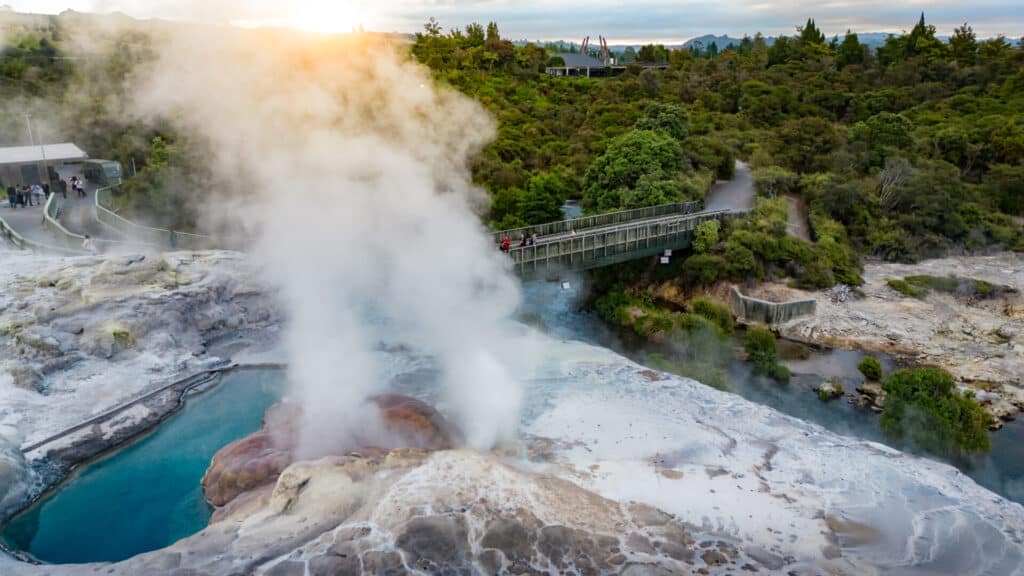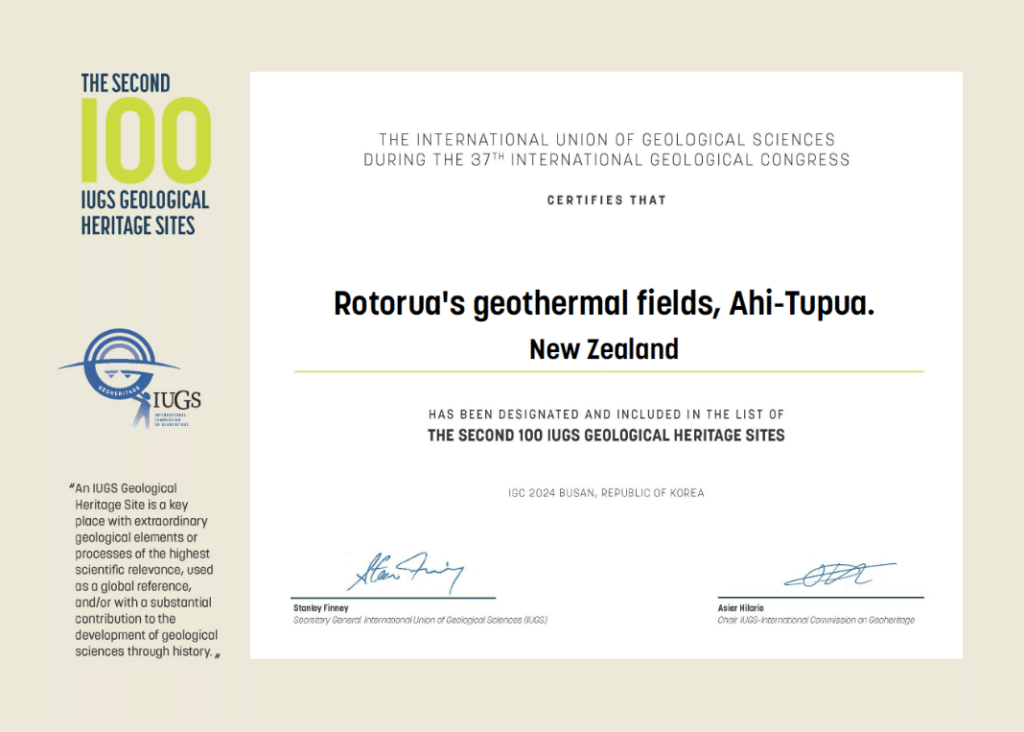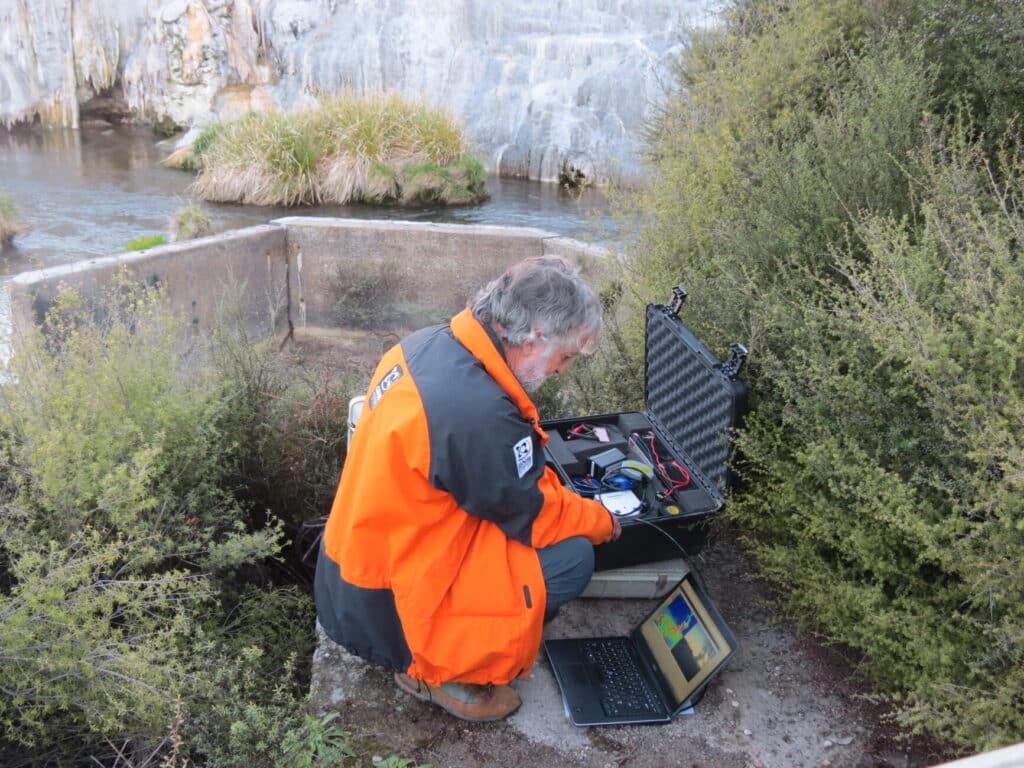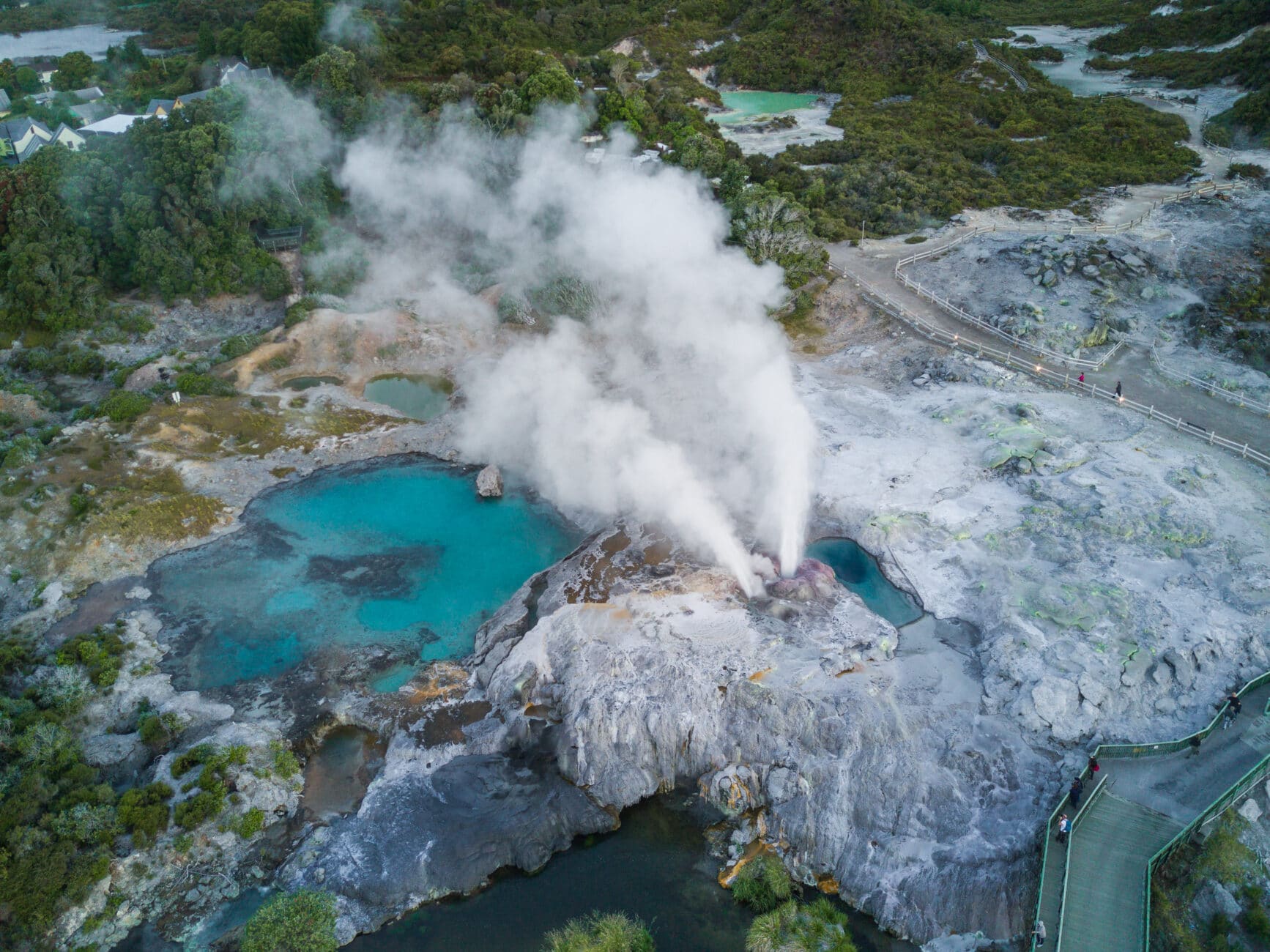Story by: GNS Science.
Rotorua’s geothermal fields (Ahi-Tupua) including Whakarewarewa Geothermal Valley, have been announced in the list of the Second 100 International Union of Geological Sciences Geological Heritage Sites at the International Geological Congress in Busan, Republic of Korea.
Aotearoa’s geothermal fields of Rotorua (Ahi-Tupua), Mount Ruapehu Volcano, Muriwai megapillow lava flows, the towering sea cliffs of Fiordland and Maruia Falls made the esteemed list on 27 August.
Over 700 experts from 80 nations and 16 international organisations took part in the collation of The Second 100, with the goal of the programme to give the highest recognition to those sites that are essential for the geological sciences.

Pōhutu geyser in eruption at Te Puia in the Whakarewarewa Geothermal Field.
Rotorua’s geothermal fields (Ahi-Tupua)
The International Union of Geological Sciences (IUGS) noted the “several thousand discharge features in three Rotorua geothermal fields (Ahi-Tupua) are globally significant. Whakarewarewa, in the Rotorua Geothermal Field has strong cultural values and has been used by Māori for centuries”.
Te Puia chief executive Tim Cossar says Ahi Tupua being recognised as a global Geological Heritage site reinforces what our kaimahi, manuhiri and tipuna have always known.
“That the diversity and beauty of geothermal expressions within the Rotorua geothermal field is spectacular to behold. Then when you wrap our cultural narrative of Te Pupu and Te Hoata, and their journey from Hawaiki to Tongariro, the connections from the Pacific through to the Central North Island resonate to this day through our storytelling.”
The geothermal systems of the wider Rotorua area were nominated by Bruce Hayward (Geoscience Society of NZ) and Brad Scott (GNS). Bruce has long history in recognition for geological heritage, while Brad has worked extensively on the geothermal systems, especially Rotorua and Waimangu.

Certificate showing Rotorua’s Geothermal Fields, Ahi-Tupua has been designated and included in the list of The Second 100 IUGS Geological Heritage Sites.
GNS Science plays a key role with supporting knowledge about the geothermal systems in the Rotorua area, including through the Rotorua Geothermal System Management Plan, where it supports Bay of Plenty Regional Council with the development and implementation of a ‘care plan’ which protects the rare and vulnerable geothermal features of the system. The plan outlines the shared vision by the community for the future: “Ka ora te mauri o Ngā Wai Ariki o Rotorua. The Rotorua Geothermal System is healthy”.

Brad Scott making making Thermal Infra Red (TIR) measurements of the Geysers at Te Puia.
GNS Scientists have long supported management and building knowledge of the system, capturing decades of data through systematic research and regular monitoring.
Whakarewarewa Village Charitable Trust Chair James Warbrick says they are so pleased to see international acknowledgement of the uniqueness and mana of the Rotorua geothermal area.
“This acknowledgment can be shared by all who support us in the preservation of our unique geothermal resources for generations to come.”
Ruapehu volcano
The IUGS noted that this volcanic plateau has “internationally unique endemic species, intrinsically linked to the geological and geothermal processes occurring in the region, which has a dual UNESCO World Heritage Status for its biodiversity”. Mt Ruapehu lies within Tongariro National Park and is New Zealand’s oldest national park and a dual World Heritage area.
This status recognises the park’s important Māori cultural and spiritual associations for the Tūwharetoa and Ngāti Rangi as well as its outstanding volcanic features. Through the GeoNet programme we monitor Mount Ruapehu 24/7, along with other active New Zealand volcanoes, which sees data collected and analysed. This helps give an understanding of behaviour at the volcano and an insight to future eruptions.
GNS Science undertakes critical work at Mount Ruapehu in conjunction with many other research organisations to better understand the volcanic landscape, hazards and provide that information to responding agencies, infrastructure providers, fellow researchers and the public.
Mt Ruapehu was nominated by a research team at Massey University.

Southeast view of Mount Ruapehu from above Karioi Forest. Credit: D Townsend.
The Second 100
The Second 100 announcement was made last week by IUGS President John Ludden, Stanley Finney, IUGS Secretary General, and Asier Hilario chair of the International Commission on Geoheritage during a special event of the 37th International Geological Congress.
This announcement consolidates this global initiative that started with the announcement of “The First 100” during the IUGS 60th anniversary event in 2022 in Zumaia, Spain.
The Second 100 IUGS Geological Heritage Sites, as with the First 100, receive IUGS recognition because they are of the highest scientific value. They are the world’s best demonstrations of geologic features and processes.
They are sites that served to develop the science of geology. They are located worldwide, and they are geologically diverse. Recognition and visibility of the “Second 100” by IUGS can lead to their further appreciation, to their use as educational resources, and, most importantly, to their preservation.

